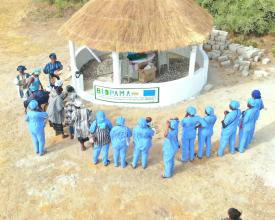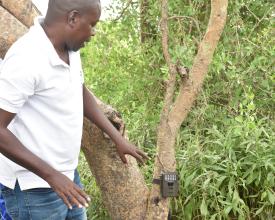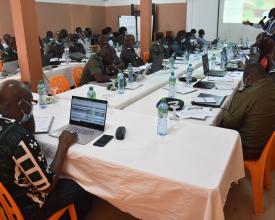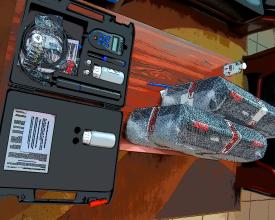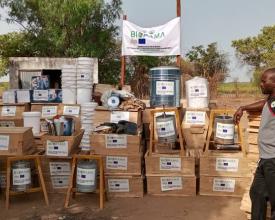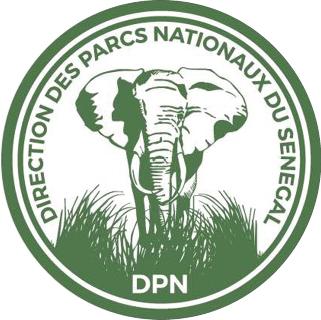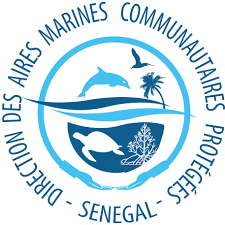
Improving the management of protected areas in Senegal
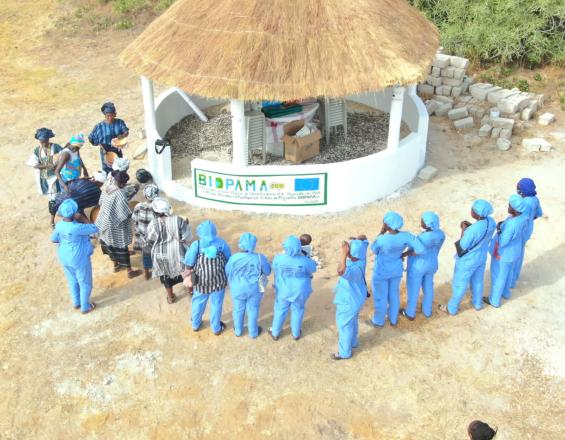
Senegal's protected areas are made up of a network representing different ecosystems (Sudanian, forest, Sahelian, lagoon, marine, coastal and deltaic), and are home to a diversity of species. Since they were set up, significant progress has been made, but unfortunately constraints of various kinds - anthropic, legal, institutional and financial - have led to a deterioration in the ecosystems and the livelihoods of the communities that depend on them.
This solution has been achieved through the support of the BIOPAMA program's Action Fund, allocated to two departments responsible for managing Senegal's network of protected areas. In particular, it has helped to improve the planning and management of protected areas, and to strengthen their governance, while at the same time putting in place conditions to improve the well-being of communities living near protected areas.
Context
Challenges addressed
The stakes involved in preserving protected areas are both ecological, in terms of conserving biodiversity and associated services, and social and economic, in terms of supporting the many human activities.
The implementation of this project has made it possible to meet a number of challenges linked to :
-
integrating these conservation issues into protected area planning ;
-
strengthening the participation and legitimacy of stakeholders in the management of protected areas;
-
strengthening managers' skills and operational resources for more effective ecological monitoring and biodiversity surveillance;
-
reducing conflicts arising from the divergent interests of different stakeholders, and diversifying alternative sources of income;
-
improve community incomes.
Location
Process
Summary of the process
Improving protected area planning documents (PAGs) was the first step taken by the project, thanks to the integration of IMET2 results. In order to implement the PAGs, the technical skills and operational resources of managers have been strengthened through the use of innovative tools such as camera traps and drones, as well as data processing and interpretation methods, followed by the provision of equipment for application in the field. To increase the effectiveness of biodiversity management actions by managers, it was also necessary to manage the social challenges of reducing pressure on resources and strengthening the commitment of stakeholders. Thus, through a process of improved governance, platforms for stakeholder interaction have been formalized, involving greater stakeholder representation in decision-making bodies (management committee, consultation framework, council of elders). As for the management of pressures on resources, income-generating activities have been identified in collaboration with the communities and then financially supported by the project.
Building Blocks
Improved planning
The project's strategy was to promote the IMET2 tool and its use within Senegal's protected area network. All managers in the protected area network took part in the training session, to ensure that the tool was properly appropriated, followed by its implementation at site level. Following the participatory elaboration of the assessment results, a process of revision of the development and management plans incorporating the IMET recommendations was initiated.
Enabling factors
In addition to the beneficiaries, the training included all the network's managers and community representatives, to have a greater impact on the number of people able to implement the tool in the field. The support provided by a coach for the data collection sessions reinforced the effectiveness of the tool's use in the field with the various stakeholders.
The availability of a coach at national level to accompany the exercise produced good results.
Lesson learned
As lessons learned, we realized that the implementation of the IMET tool in the field is subject to the availability of financial resources.
The lesson learned is that the lack of resources allocated to PAs is a blocking factor to better integrate the tool into PA management.
Pre-filling is an important step in managing the time allocated to the assessment, as the work was more tedious at poorly prepared sites.
Strengthening the coach network within countries is more than necessary for a good appropriation of the tool, the availability of only one coach for the country made this exercise very tedious.
IMET reports serve as advocacy documents for donors, helping to boost PA funding and guide management decisions.
Resources
Skills enhancement
A major capacity-building component was developed for beneficiaries to improve biodiversity management in the protected area network. The aim was to improve the ecological monitoring system and the level of knowledge about species and habitats through the adoption and integration of new technologies (drones and camera traps).
Community expectations were taken into account as part of these training courses, to ensure the sustainability of income-generating activities for their benefit.
Enabling factors
Ecological monitoring managers were the main targets at site level, while at central level, Geographic Information System managers from the two beneficiary departments were involved to better implement and centralize the data collected in the field.
Practical case studies on protected areas served as an exercise in action-based learning.
As far as local stakeholders were concerned, the themes were adapted to the needs identified in order to respond to their concerns.
Lesson learned
The choice of targets adapted to the training themes gives better results in terms of the beneficiaries' ability to share their experiences in the field. Experience has shown that targets who had prerequisites on the proposed themes shared their feedback in the field immediately after the training.
The list of logistical problems identified in the field, such as equipment updates and the incompatibility of computers and smartphones with the equipment (drone, camera, software), made field practice difficult.
As a lesson learned, there is a need to manage logistical aspects with the targets to avoid hitches in the field in order to reinforce the effectiveness of the training.
The main lesson learned from skill-building for communities is that they benefit more from iterative and participative training sessions than from theoretical ones.
Resources
Support for training results in the field
This block highlights the project's strategy for deploying the various skills acquired in training managers in the field. To this end, the sites' operational resources have been strengthened in terms of these new technologies (drone and trap camera equipment), as well as equipment for monitoring marine biodiversity (precision scales, experimental fishing net, capture net for birds, multi-parameter kit for monitoring water quality).
With regard to IMET, the project supported the sites in the participatory process of data collection, as well as ensuring that the objectives and recommendations formulated in the sites' planning documents were taken into account.
Enabling factors
The acquisition of equipment following the training sessions was a key success factor, as one of the recommendations made by participants at the end of the training workshops was to make this equipment accessible for the operationalization of field activities.
The use of the IMET tool in the field and the updating of the management plans followed a participatory dynamic involving the key stakeholders to ensure that the various concerns were taken into account.
Lesson learned
Thanks to the involvement of managers, the technical characteristics of the fishing nets acquired are adapted to the ecological conditions of the protected areas.
With regard to the multi-parameter kits, the project has capitalized on the experience of the first endowments, which were not sustained due to a lack of technical support for the beneficiaries, which is why these considerations have been taken into account through training in use and maintenance techniques prior to handover.
Improving governance
The project involved different categories of protected areas (national parks, marine protected areas and community reserves), each with its own specific governance model. The aim was to establish harmonized, participatory governance frameworks applicable to the different categories. To achieve this, a governance diagnostic document identifying priority actions was drawn up in a participatory manner, and a number of recommendations were put into practice in the field, including the strengthening of stakeholder participation.
Enabling factors
Stakeholder mapping was used as a criterion for appointing
for appointing representatives of the various constituencies
governance bodies.
This criterion has helped to improve the participative governance of the PAs.
Lesson learned
The current context of changes in natural resource management calls for greater openness towards communities in category 2 protected areas. The project has experimented with the Saloum Delta National Park by facilitating the establishment of a consultation framework and a management committee where stakeholders are represented and participate in the decision-making and implementation processes, but these bodies are struggling to become operational.
The lesson here is that community involvement alone is not enough to implement adaptive governance in this type of protected area, as the willingness to share the power of authority with these communities is the only guarantee of success.
Strengthening livelihoods
The precarious living conditions of communities living on the outskirts of protected areas contribute to pressure on resources, which are often weakened and often a source of conflict. Setting up alternative activities helps to empower them and preserve resources. An inclusive and participatory approach was adopted when implementing the income-generating activities supported by the project. This process began with a diagnosis of wealth-generating activities, identification of beneficiaries, selection of activities on the basis of community proposals, development of project sheets and business plans for each activity sector, and provision of resources for their implementation.
Enabling factors
The participatory approach adopted has given stakeholders greater responsibility in the identification, training and implementation process. The selection criteria defined were economic (profitability), social (food security, nutritional value) and environmental (low negative impact), with particular attention paid to women's MSEs in targeting beneficiaries.
Skills development has been carried out to support the long-term establishment of these activities.
Lesson learned
At the time of diagnosis, one of the beneficiary groups had no experience of the chosen activity, and even less space to carry it out. However, it quickly established itself as the most dynamic after being allocated a plot of land by the commune.
The lesson learned is that women's access to land is a key factor in development. The same applies to organizational dynamics and beneficiaries' commitment to the activity.
Impacts
Impact on biodiversity
The integration of innovative technologies, drones and camera traps has improved biodiversity knowledge in 12 protected areas benefiting from training and equipment.
The effectiveness of protected area management is improved with the integration of IMET results into 06 revised PAGs. IMET also contributed to the designation of a RAMSAR-labeled PA and served as an advocate for improved funding for the Gandoule MPA, with support of 76,225 euros from the PPI.
Impact on communities;
Strengthened community participation in 02 management committees, including representatives of stakeholder groups, as well as the involvement of notables in 01 comité de sage, a conflict regulation and management body.
The incomes of 230 direct beneficiaries, including 191 women, have been raised thanks to support for income-generating activities focusing on beekeeping, rice marketing, fish processing, ecotourism and market gardening integrated with poultry farming. The Ndorong Log women's group saw its profits rise from 1,136 euros to 5,404 euros in six months, thanks to the integration of poultry farming with market gardening.
Beneficiaries
The main beneficiary groups are :
- communities ;
- managers ;
- MSEs of women ecoguards;
- technical services at decentralized level ;
- administrative and local authorities;
Sustainable Development Goals
Story
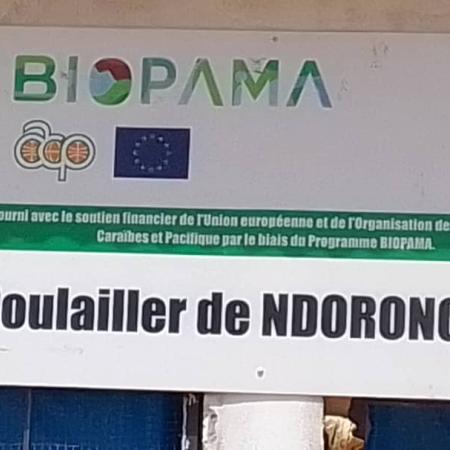
DOWN UP APPROACH TO DEVELOPING INCOME-GENERATING ACTIVITIES ON THE PERIPHERY OF PROTECTED AREAS
Drawing on the lessons learned from a number of disconcerting experiences with the effectiveness of our actions towards communities, the BIOPAMA Action Fund-supported project to improve the management of protected areas in 02 biosphere reserves in Senegal has changed its approach to community development in order to improve the impact of the support it provides.
To support income-generating activities on the outskirts of its 06 intervention sites, the project has adopted an inclusive and participatory approach with beneficiaries in the choice of wealth-generating sectors to be financed.
To achieve this, 04 criteria (profitability, conformity with environmental preservation, local know-how, benefit to communities, conformity with objectives and available means) were defined for the selection of activities, and a methodological approach (document review, meeting, semi-structured survey) adopted for data collection.
Meetings organized with local populations involved 24 MSEs and women's federations, livestock breeders, beekeepers, fishermen, etc., at the end of which a diagnostic report was produced and returned to the communities for validation.
The feedback workshops were a pretext for inviting stakeholder groups in each protected area to meet for 10 minutes to identify a key activity in line with the criteria. The various activities proposed were: poultry farming integrated with market gardening, fish processing, beekeeping, ecotourism and rice marketing. These various proposals were submitted to the experts for appraisal prior to final validation.
The results of this approach were to
- improving women's incomes, as 04 of the 06 projects selected benefited from women's MSEs;
- federate stakeholders around a common objective, and encourage them to take ownership of the activities they themselves have proposed;
- reinforce transparency in the process of selecting beneficiaries, who are thus considered legitimate by their peers;
- improve the effectiveness and efficiency of support.
